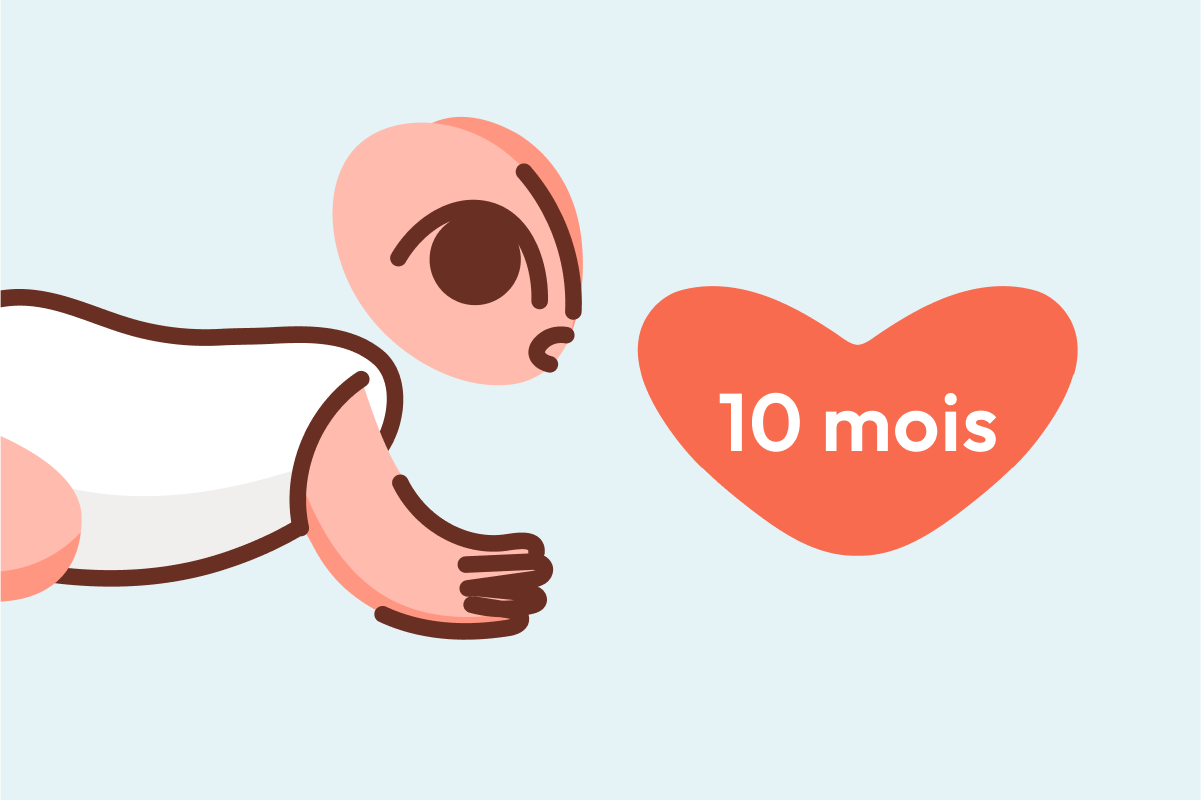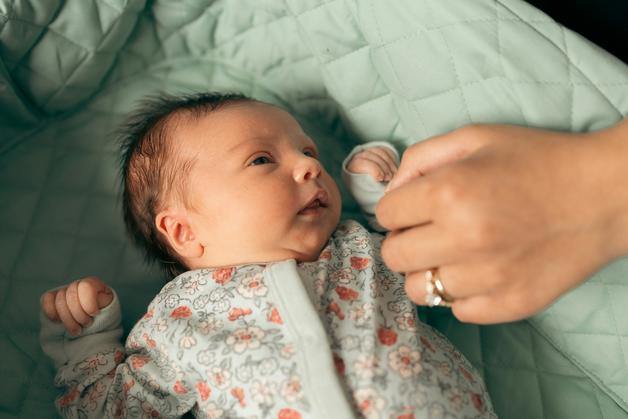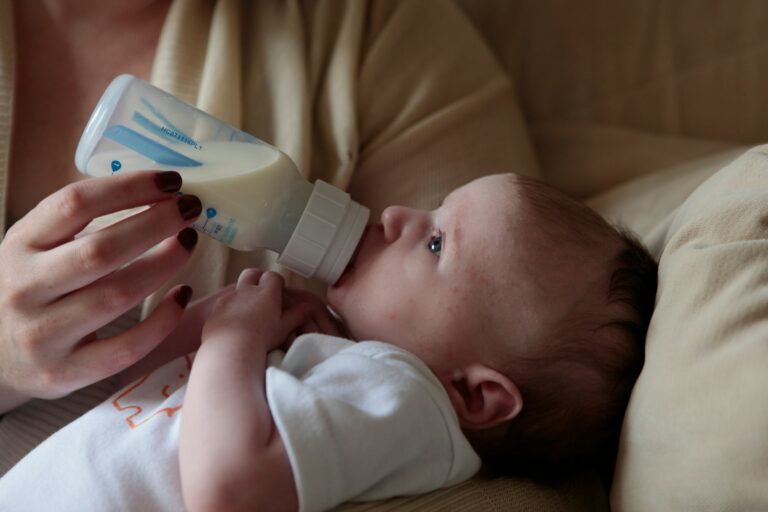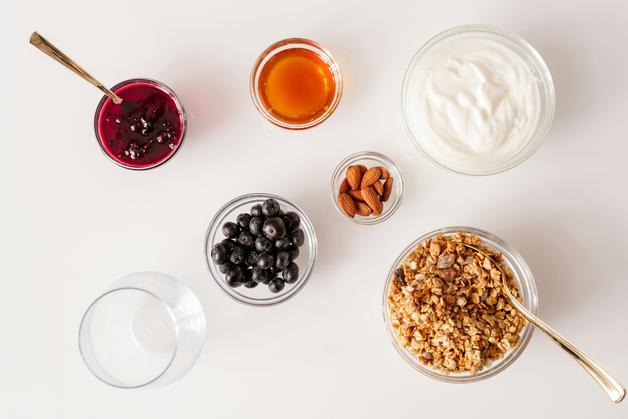The 10-month milestone is a whirlwind. For many parents, it’s the age when every day brings a mix of pride and puzzlement—why won’t the blocks stay stacked, where did the shoe end up, and is that a new sound, or just another squeal? As your baby 10 months explores, they’re not only crawling and babbling but unraveling a world full of textures, tastes, rhythms, and puzzles. Questions about eating, sleep, development, or even those mysterious red patches on their cheeks? You’re not the only one seeking clarity. The focus here is simple: transitions, challenges, and small victories, with insights drawn from pediatric science and real-life experiences. Here’s what matters most when your baby 10 months is on the move.
Baby 10 months: what to expect and how to support development
Each baby 10 months old is in the midst of a personal revolution. One moment you’re watching a triumphant crawl across the carpet, the next you’re bracing as little hands grab the edge of the table. Gross motor skills like pulling up and cruising (that determined sideways walk holding onto furniture) are becoming second nature, while the delicate dance of the pincer grasp—picking up objects between thumb and forefinger—makes feeding and play much more interesting.
Their exploratory behavior is bursting forth: expect more confidence in navigation, more curiosity about the unknown, and a tangible hunger for engagement. What can you do? Encourage movement by clearing safe spaces, and don’t shy away from supervised challenges like pillows to climb over or push toys to chase. Interactive play is a catalyst for cognitive development—think peek-a-boo, imitation games, singing, facial expressions, and a running commentary of the world around you.
There’s no single timeline that fits every baby 10 months old. Developmental divergence is the norm. What’s key: if questions about progress arise, consulting a pediatrician can help separate normal variations from underlying concerns.
Physical and Motor Development
Gross motor skills: momentum and adventure
Movement transforms at 10 months—what once looked like wobbly attempts is now a daily demonstration of strength and risk assessment. Babies often alternate between crawling, scooting, and the more daring activity of pulling themselves to stand, sometimes even standing unassisted. Muscle development and balance are at center stage. The humble living-room floor becomes a laboratory for experimentation.
- Umbrella strollers and push wagons aren’t just for transport; they invite stability while little feet test new terrain.
- Large soft balls, wide pillows, and safe obstacles let baby 10 months fine-tune responses to their environment.
- Furniture—sofas, ottomans, low tables—becomes scaffolding for the exhilarating act of cruising, a stepping stone towards those first steps.
This intensity of exploration means safety measures are paramount: anchor furniture, create barrier zones, and always stay within arm’s reach during new ventures.
Fine motor skills: grasp, release, and repeated attempts
Fingers turn into finely tuned instruments. The pincer grasp, that precise thumb-and-forefinger grip, is a diagnostic marker of maturation. Now, baby 10 months will pass objects hand-to-hand, drop toys repeatedly (the gravity experiment never gets old), and seek out textures—corrugated books, plush blocks, bouncy objects.
Encourage this progression by:
- Experimenting with safe finger foods (soft, easy to swallow, cut into small pieces)
- Providing stacking cups, shape sorters, and containers to fill and empty
- Integrating touch-and-feel books to extend the range of sensory input
Letting babies self-feed offers more than calories; it actively shapes brain networks for autonomy and decision-making.
Language, Communication, and Emotional Growth
Language: babble, gesture, connection
Science tells us that even before real words form, the brain is building neural networks attuned to language. Baby 10 months might say “mama” or “dada” consistently, make emphatic exclamations, point at must-haves, or wave for attention. Communication isn’t just verbal—gesture, facial expressions, and sounds all signal intent.
Practical approaches:
- Narrate the ordinary: “This is your spoon,” or, “We’re putting on shoes.”
- Read together daily, even if pages turn backwards.
- Sing repetitive, rhyming songs to foster phoneme recognition (the building blocks of language).
Don’t worry if formal words lag. Each conversation, song, and game is a scaffold for future literacy and emotional nuance.
Emotional development: feeling big emotions in a small body
Frustration mounts quickly for a baby 10 months—forbidden outlets, unreachable objects, or interrupted play can lead to bursts of tears or arching backs. These are signs of a robust emotional life. Early empathy also starts to bloom; your baby may react visibly if someone nearby appears distressed.
Ways to foster emotional regulation:
- Label emotions: “You’re upset because the ball rolled away. That’s hard.”
- Provide comfort through presence and gentle touch. Consistent routines, soft words, and patience help your baby learn self-soothing and trust.
Understanding the cyclical nature of separation anxiety, with its peaks and valleys, will free you from the expectation of perfect calm.
Cognitive Development
Object permanence, cause and effect, and the search for patterns
Hidden toys. Peek-a-boo. Where did the spoon go? Baby 10 months is deepening their grasp of object permanence, a phenomenon pinpointed in classic Piagetian research as a signpost of advanced cognitive skills. Now, when something disappears, expect determined searching—not indifference.
Learning to imitate you in small gestures or mimic expressions is another leap, revealing how babies actively construct their understanding of social interactions. They’re beginning to make sense of cause and effect—push the button, music plays; shake the rattle, sound emerges.
To enhance this learning:
- Rotate toys and objects regularly to avoid overstimulation and spark new interest.
- Choose simple puzzle toys that reward attempts to fit shapes or stack rings.
- Practice “hide and reveal” games, not only for fun but for developmental gain.
Play, Activities, and Promoting Independence
Structuring a day for baby 10 months: movement meets rest
A lively baby 10 months thrives on balance—periods of high activity punctuated by quiet moments. Encourage mornings filled with crawling, stacking, and noisy interactive toys. Reserve afternoons for quieter bonding: reading on the sofa, exploring a basket of textured fabrics, or simply lying together to observe light and shadow moving across the room.
Hand your child the reins where possible:
- Let them experiment with physical skills, hovering nearby for reassurance but not interference.
- Put age-appropriate toys within reach—and resist the urge to step in unless necessary.
- Mealtime? Yes, it will get messy. Self-feeding fosters coordinated movement and decision-making, far outweighing the laundry cost.
The message? Autonomy grows best when space is safe, signals are clear, and support is unwavering.
Health and Skin Care
Eczema, dry skin, and day-to-day discomfort
Itchy, red patches on your baby 10 months’ cheeks or arms? You’re witnessing a common chapter. Atopic dermatitis (infant eczema) is a genetically influenced tendency for fragile, reactive skin. As skin forms an imperfect barrier, allergens and irritants sneak through—cue inflammation, roughness, and itch.
- Bathe with fragrance-free cleansers.
- Dress baby 10 months in soft, breathable fibers—cotton is best.
- Moisturize after every wash with a hypoallergenic cream vetted by pediatric dermatologists.
Diet doesn’t “cause” eczema, but some foods can trigger flare-ups in susceptible babies. If your efforts yield little improvement, medical options exist: topical corticosteroids (only on prescription), or, occasionally, antihistamines to curb the itch-scratch cycle. Persistent rashes, oozing, or signs of infection always warrant a physician’s assessment.
Sleep Patterns and Routine
Bedtime routines: consistency for bedtime resistance
Even a baby 10 months who seems boundless in the day needs ample sleep. Building a nightly structure—warm bath, quiet story, dim lights—prepares the brain to shift from stimulation into drowsiness. Scientific research links regular bedtime routines to better sleep onset and longer nighttime sleep.
Practical advice:
- Put baby 10 months down while drowsy yet awake, allowing them to practice self-soothing (a fundamental for future independent sleep).
- Provide a familiar comfort object—blanket or soft toy—but avoid any loose items that could obstruct breathing.
- Maintain a dark, cool, and peaceful environment. White noise or gentle lullabies can help mask sudden sounds.
Daytime naps remain essential. Most 10-month-olds need two—one mid-morning, one early afternoon. If evenings bring resistance or late fussiness, reassess daytime nap duration and timing.
Night wakings: the science behind sleep interruptions
The reasons for disrupted sleep at 10 months are multifaceted: emerging milestones, teething discomfort, and the deepening awareness of parental absence (yes, separation anxiety strikes at night too). When your baby 10 months wakes and cries, soothing with your presence—without immediately picking them up—teaches important self-regulation.
If disturbances persist or sleep is persistently fragmented, discussing patterns and possible medical contributors (e.g., reflux, allergies) with a pediatrician can provide clarity.
Feeding and Nutrition
Quantities, textures, and allergen introduction
A baby 10 months will typically drink between 500 and 700 ml (that’s 17–24 ounces) of breast milk or infant formula daily. This remains their nutritional foundation, but solid foods are now more than a supplement—think building block for food tolerance, chewing, and vitamin diversity.
Feeding guidance:
- Offer a spectrum of flavors: cooked veggies, seasonal fruit, milder proteins (finely shredded chicken, cooked egg yolk, lentils), soft grains.
- Avoid salt and sugar—infant kidneys and tastebuds don’t need the training.
- New foods, especially known allergens (egg, dairy, peanut in safe form), should be introduced one at a time, with careful observation for any signs of reaction—rashes, swelling, vomiting, or wheezing warrant immediate medical review.
- Don’t serve honey or whole nuts due to risks of infantile botulism and choking.
Beverages? Water from an open or straw cup is training ground for independent drinking—skip sweetened drinks, as dental decay can build stealthily.
Mealtimes can be a joyful chaos: textures smeared, food dropped, spoon wielded as a drumstick. Yet this messy process is where hand coordination, taste discernment, and confidence blossom.
Safety and Babyproofing at 10 Months
A baby 10 months in full exploratory mode finds every forgotten coin under the couch, every unlocked drawer, every dangling cord. Prevention, not correction, minimizes hazards.
- Install safety gates at all stairs and off-limits rooms.
- Anchor televisions and heavy furniture, pad furniture corners, and use cabinet latches.
- Keep small objects, detergents, and all medicines out of sight and reach.
- Apply outlet covers: the grasp reflex plus curiosity creates a perfect storm.
- Always use a properly installed, rear-facing car seat.
- Supervise every mealtime, and slice grapes, sausages, and similar foods lengthwise to prevent choking.
- Never leave baby unattended—even for a moment—in the bath, kitchen, or when eating.
Being proactive isn’t about fear; it’s a daily demonstration of care, allowing curiosity without unnecessary risk.
Key Takeaways
- Every baby 10 months writes their own developmental story—variations are expected, not alarming.
- Curiosity, movement, and emotion are building blocks for the rapid changes of this period.
- Safe environments, a generous mix of interactive and sensory play, and consistent, loving routines are the foundation for thriving.
- Nutrition at this stage is about nutrients and experiences: a diversity of textures, gradual introduction of allergens, self-feeding, and plenty of patience.
- Sleep, still unpredictable at times, is supported by structure, routine, and recognition of both physical and emotional transitions.
- For every “Is this normal?” moment—there are scientific resources and healthcare professionals ready to listen.
- There’s no universal formula—but there’s always support. For tailored advice, growth milestone tracking, and free health questionnaires, download the Heloa app.
Enjoy the discoveries, the quirks, and even the chaos—your baby 10 months is learning, and so are you.
Questions Parents Ask
Can a 10-month-old have cow’s milk?
At 10 months, it’s not recommended to offer cow’s milk as a main drink, as baby’s digestive system is still maturing and breast milk or infant formula remains the most suitable primary source for nutrition until one year. However, small amounts of cow’s milk can sometimes be included in cooked foods like porridge or sauces. If you have any questions about introducing new foods, feel free to check with your healthcare provider to adapt to your family’s specific routine and your baby’s needs.
What activities help stimulate a 10-month-old’s development?
You can promote your baby’s development through playful and simple daily activities. Singing songs, reading short stories together, playing peek-a-boo, or allowing your child to explore different safe textures all support language, motor, and cognitive skills. Letting your little one practice picking up small objects or moving between pieces of furniture gives opportunities to strengthen muscles and coordination. Remember, every moment spent together is a step forward—trust your instincts and enjoy these explorations.
How much should a 10-month-old eat at each meal?
Meal portions vary widely from one baby to another at this age. Usually, babies eat small amounts—sometimes just a few teaspoons, sometimes a bit more. You may notice your child’s appetite changes from day to day, and that’s perfectly normal. The important thing is to offer a range of textures and flavors from different food groups, while still ensuring they get enough breast milk or formula. Try to follow your baby’s signals of hunger and fullness without pressure—mealtimes should be a positive and relaxed experience for both of you.

Further reading:









